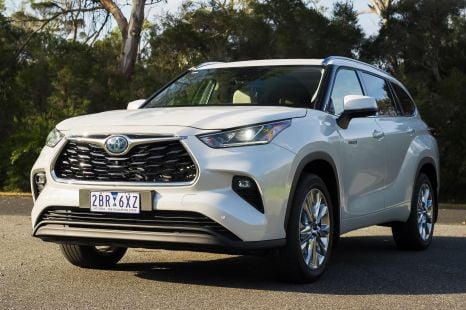

Max Davies
2026 Toyota Kluger review
2 Days Ago
The Toyota Corolla has always been a sensible, practical option. In hybrid sedan form, it's the epitome ultra of sensible, practical motoring.
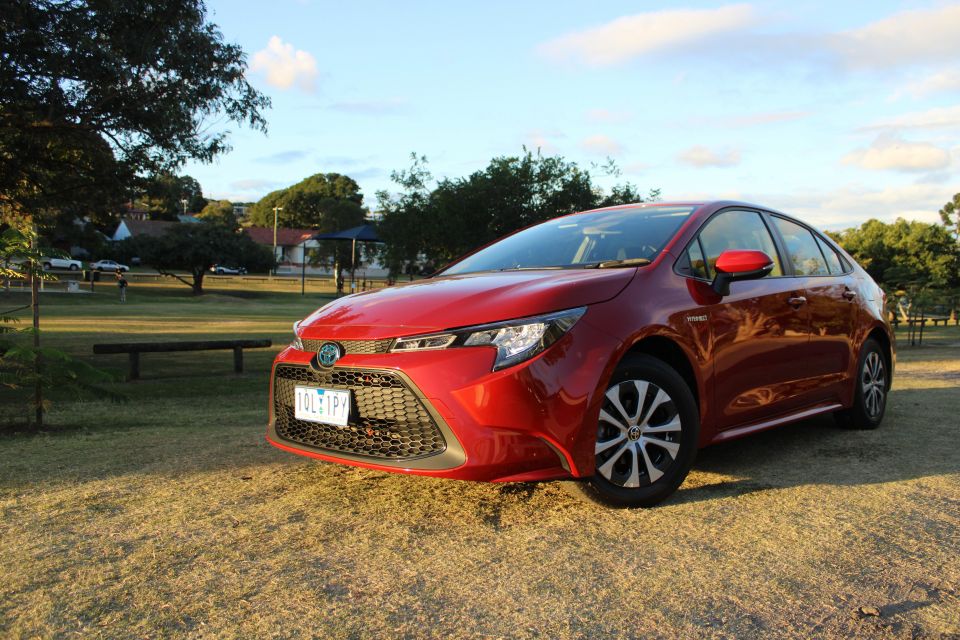


News Editor
New from
$23,335
excl. on-roads

News Editor
New from
$23,335
excl. on-roads


News Editor
New from
$23,335
excl. on-roads

News Editor
New from
$23,335
excl. on-roads
Quickly see how this car stacks up against its competition. Select any benchmark to see more details.
Where expert car reviews meet expert car buying – CarExpert gives you trusted advice, personalised service and real savings on your next new car.
We quite like the latest generation of Toyota Corolla hatchback. It’s better to drive than ever before, it’s stylish, and the available hybrid powertrain balances performance and fuel economy superbly.
Unfortunately, its stylish looks come at a cost. Boot space is worse than its best-selling rivals, even the rakish Mazda 3 hatchback. Likewise, the back seat feels confining and gloomy.
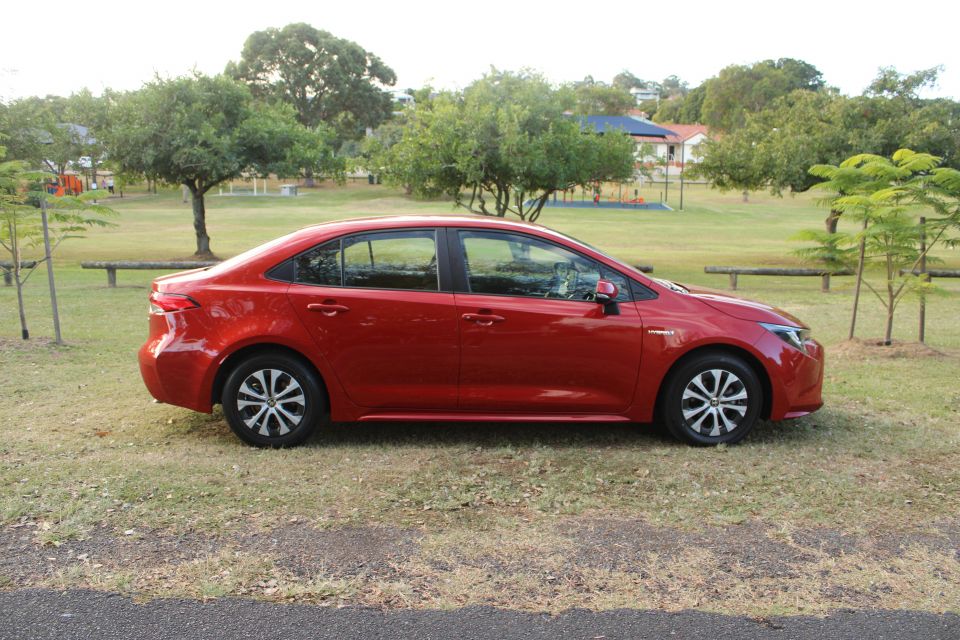
The sedan goes some way towards remedying these flaws. It rides a wheelbase 60mm longer, shared with the even more practical wagon variant not sold here, and has a boot with 150 more litres of luggage volume.
Unlike the stylish Camry, the Toyota Corolla sedan has a rather stubby rear. Combined with its fairly long front overhang, it leaves the notchback looking somewhat peculiarly proportioned.
The aggressive maw up front also stands in stark contrast to the conservative rear. It’s no beauty queen – particularly when put next to the elegant Mazda3 sedan – but we’re hard-pressed to think of a generation of Corolla sedan that could ever be called beautiful to behold.
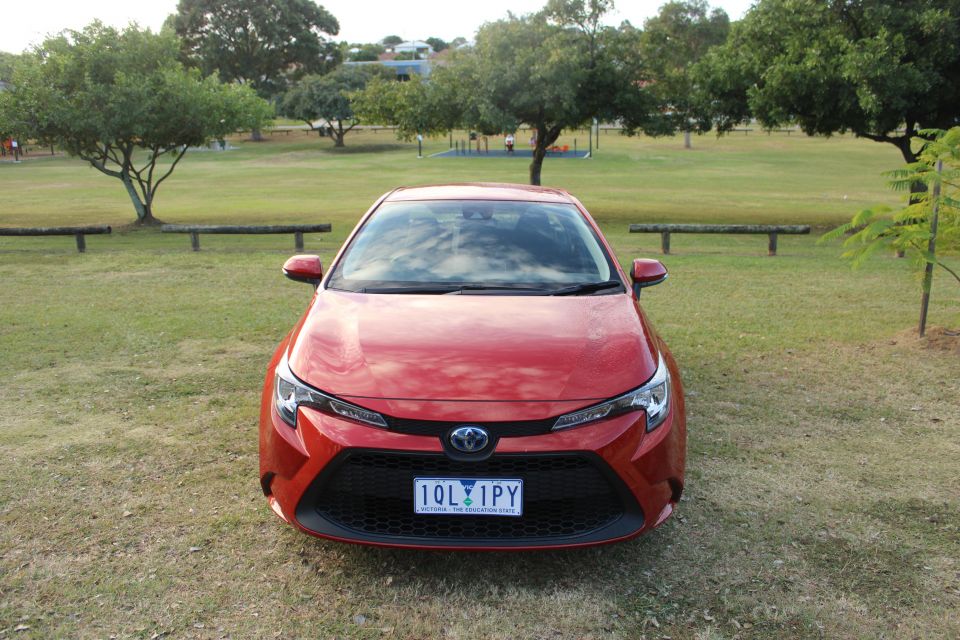
Toyota makes it easy to pick a Corolla. The sedan and hatchback cost the same and you can get both body styles with either the regular petrol engine or the hybrid.
The range opens with the Ascent Sport petrol manual at $23,335 before on-road costs. An automatic adds $1500 to the base price, while the hybrid option costs $26,335 before on-road costs.
Our tester had the optional satellite navigation and DAB+ digital radio, which adds $1000 to the price.
Toyota offers both the sedan and hatchback in Ascent Sport, SX and ZR trims. For some reason, however, the ZR sedan is only available with the regular petrol engine and not the hybrid.
The Corolla’s strongest value play is that it’s the only hybrid in Australia with a price under $30,000.
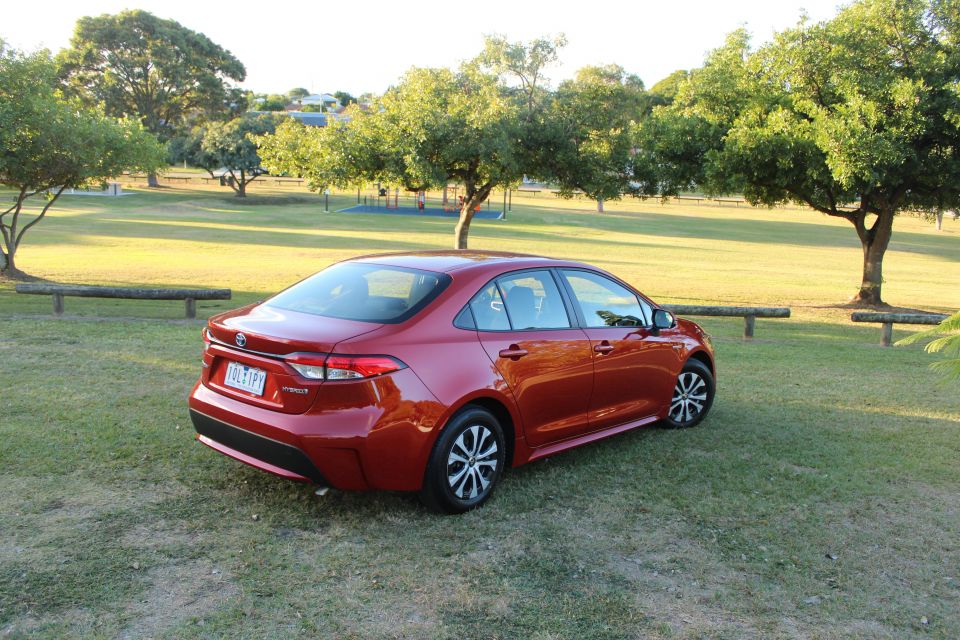
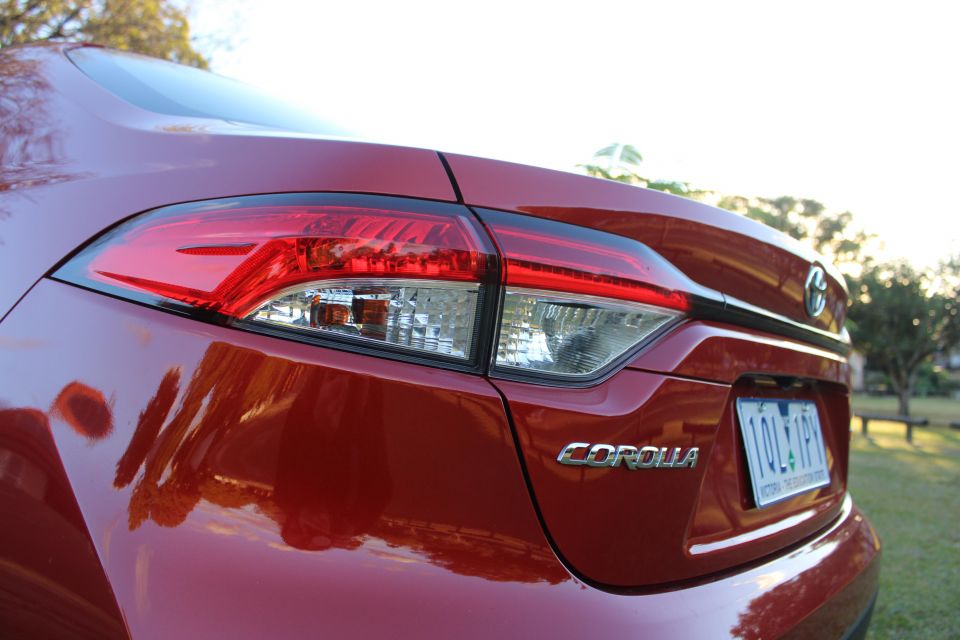
Buy your new car without the stress. It's fast, simple and completely free.

Great service from Travis and team, second time I have used this business would not hesitate to recommend them to anyone
Craig C.
Purchased a Ford Ranger in Sunshine Coast, QLD
CarExpert helped Craig save $7,224 on his Ford Ranger, now let us save you on your next new car.
Get your BEST priceIf you set aside the Corolla’s hybrid powertrain, which is a boon for the car’s value for money score, the actual standard equipment list isn’t terribly impressive.
There’s a well-sized 8.0-inch touchscreen infotainment system with Android Auto and Apple CarPlay, a six-speaker sound system and a reversing camera but no parking sensors.
In terms of safety kit, there’s standard autonomous emergency braking with forward-collision warning, as well as lane-departure warning and lane-keeping assist. Adaptive cruise control is also standard.
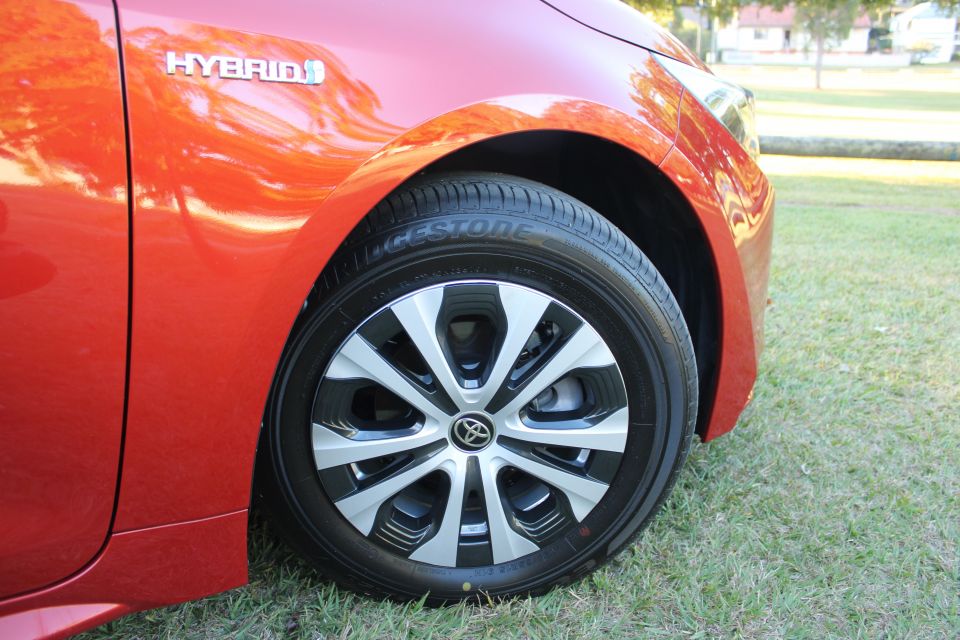
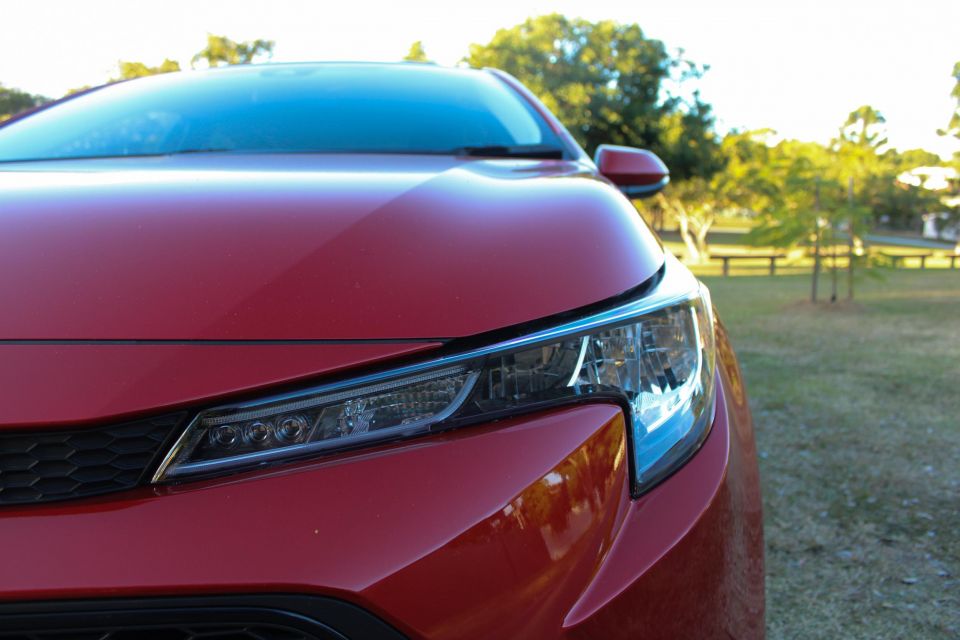

By comparison, the base Kia Cerato S has a lower-tech AEB system but offers pedestrian and cyclist detection and adaptive cruise as part of a $1000 safety pack. The pack also adds blind-spot monitoring and rear cross-traffic alert, which to get on the Corolla you’ll need to pay an extra $3400 to step up to the mid-range SX. The Cerato’s price – $25,290 before on-road costs for the S with Safety Pack – slides in under the Ascent Sport’s.
While it can’t match the Corolla’s fuel economy, the Mazda3 G20 Pure offers a lot more kit for just $200 more. That includes blind-spot monitoring, rear cross-traffic alert, rear parking sensors, satellite navigation, and an eight-speaker sound system.
If you’re looking for an abundance of comfort and convenience features, you won’t find them in the Ascent Sport. However, if your idea of value for money is a decent array of safety equipment and superb fuel economy, you’ll approve.
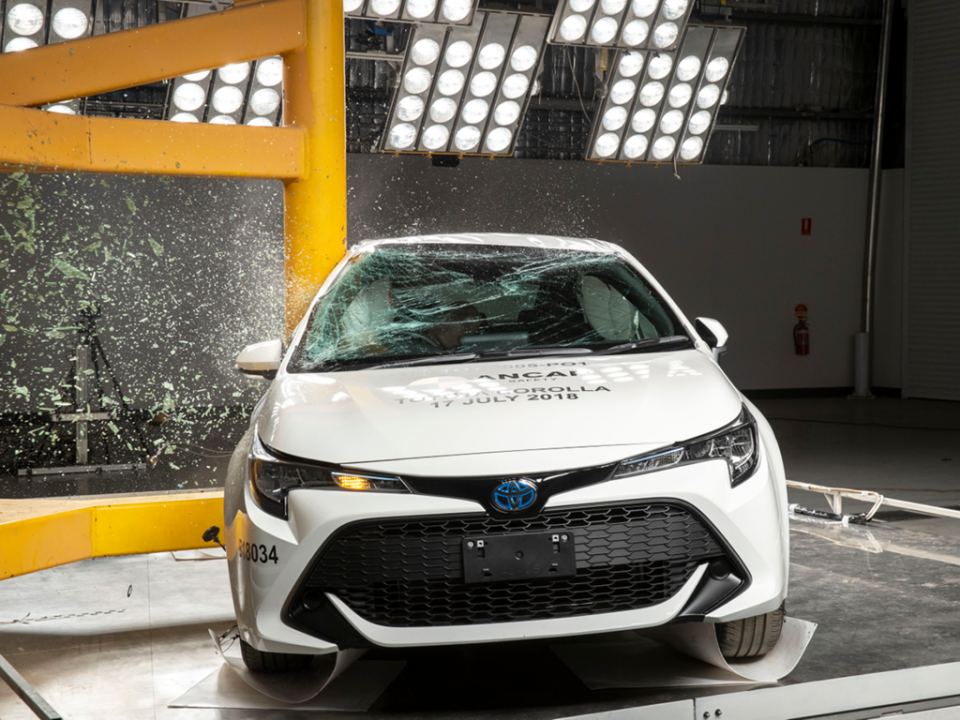
ANCAP tested the Toyota Corolla in 2018 and gave it a rating of five stars. That was based on an impressive 96 per cent score for adult occupant protection, as well as scores of 83 per cent in child occupant protection, 86 per cent in vulnerable road user protection, and 76 per cent in safety assist.
All 2020 Toyota Corollas feature autonomous emergency braking with forward-collision warning and pedestrian and cyclist detection. The warning and the emergency braking work at speeds between 10 and 180km/h for other vehicles and 10 to 80km/h for pedestrians and cyclists.
You’ll also find blind-spot monitoring, rear cross-traffic alert, seven airbags (front, front-side, curtain and driver’s knee), lane-departure warning and lane-keeping assist.
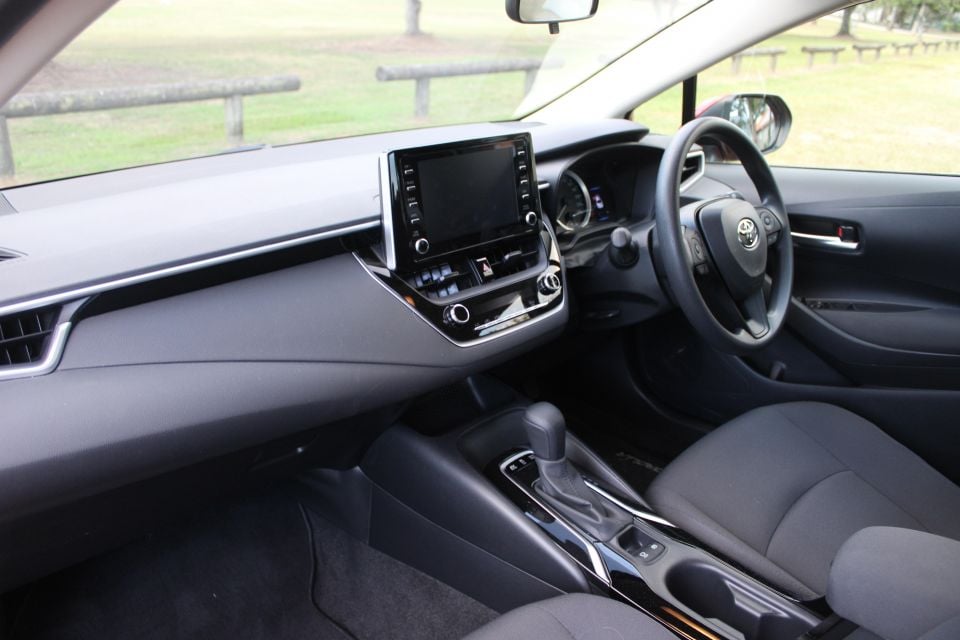
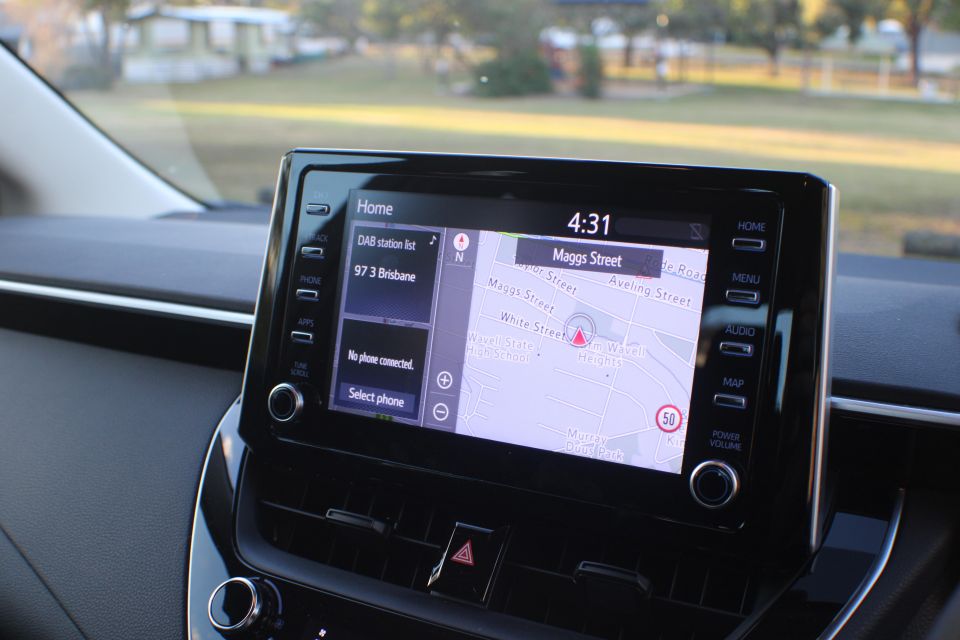
The Toyota Corolla’s interior balances style and ergonomics well. The 8.0-inch touchscreen is mounted quite high on the dash with the climate controls just below. There isn’t much of a centre stack to speak of, with no switchgear below the climate controls.
Though the cabin is a sea of black on black like most rivals, the Corolla has some gloss black and metal-look trim to provide some contrast. That includes metal-look controls, including two knobs for the climate control, which feel substantial. We’d love a splash of colour in here but that’s a criticism that can be applied to almost every small car.
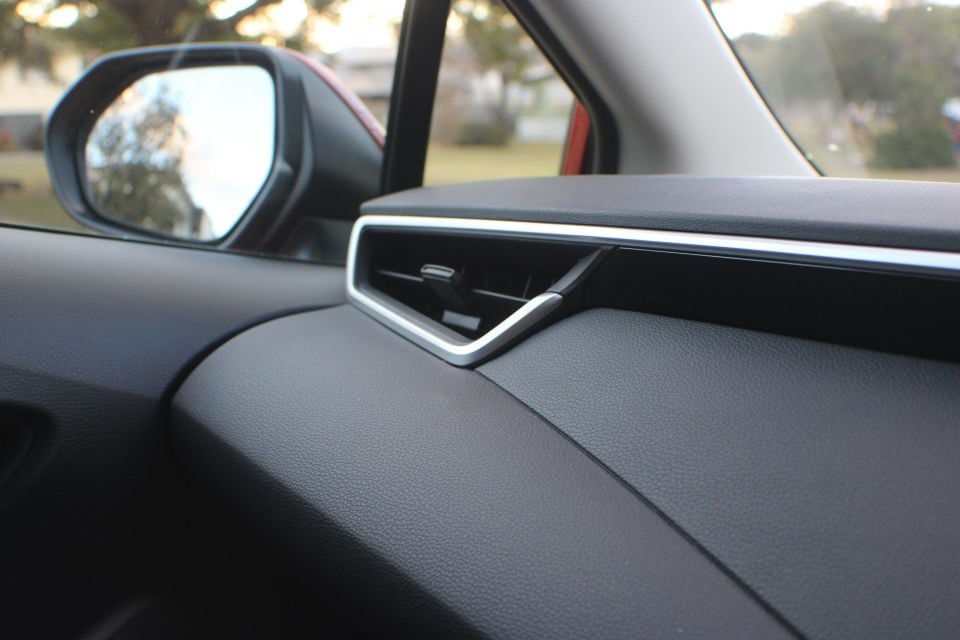
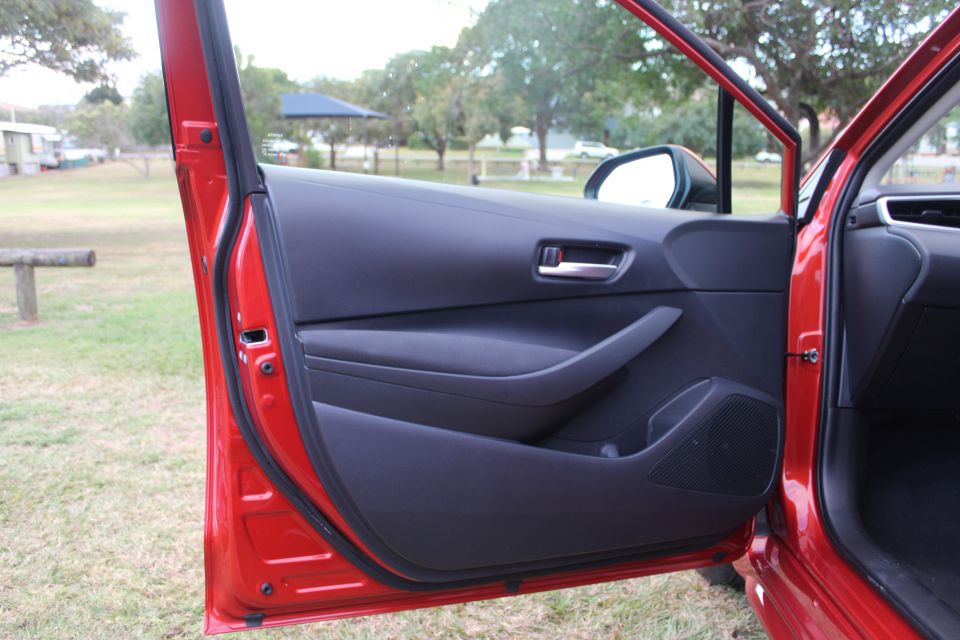
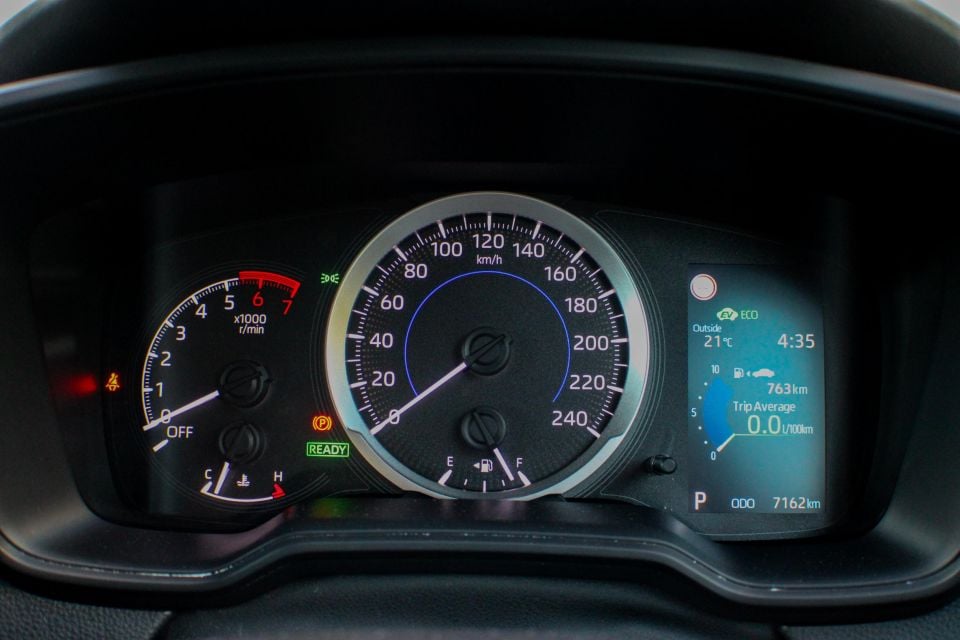
The dash top is soft to the touch while some cloth trim is used on the centre console bin’s lid and on the door panels. Everything else is hard plastic but it’s assembled well, as you’d expect in a Corolla.
Toyota’s infotainment system isn’t the best in the segment but it boasts decent response times plus standard Android Auto and Apple CarPlay. We also approve of the use of physical buttons on either side of the screen to take you to different functions, as it’s always easier to press an actual button than a screen when you’re on the move.
Wireless phone charging isn’t available on the Ascent Sport, with the pad replaced by a handy rubberised shelf that’s perfect for your phone. No stuffing it into the cupholder for you!
There are two USB inputs in the front of the cabin – one in the centre console bin next to a 12V outlet and one you’ll easily miss, located near the glove compartment handle.
The rear of the cabin is much more pleasant than that of the hatchback but isn’t quite as spacious and comfortable as in a Kia Cerato sedan. You’ll need to watch your head stepping into the back seat due to the low roof line. Once you’re inside, there’s sufficient headroom for someone measuring around 180cm. Legroom, too, is more than adequate for a small sedan.
The front seatbacks are scooped out to improve knee room and are upholstered in cloth. You won’t find much in the way of amenities back here, though – no air vents or USB outlets are present.
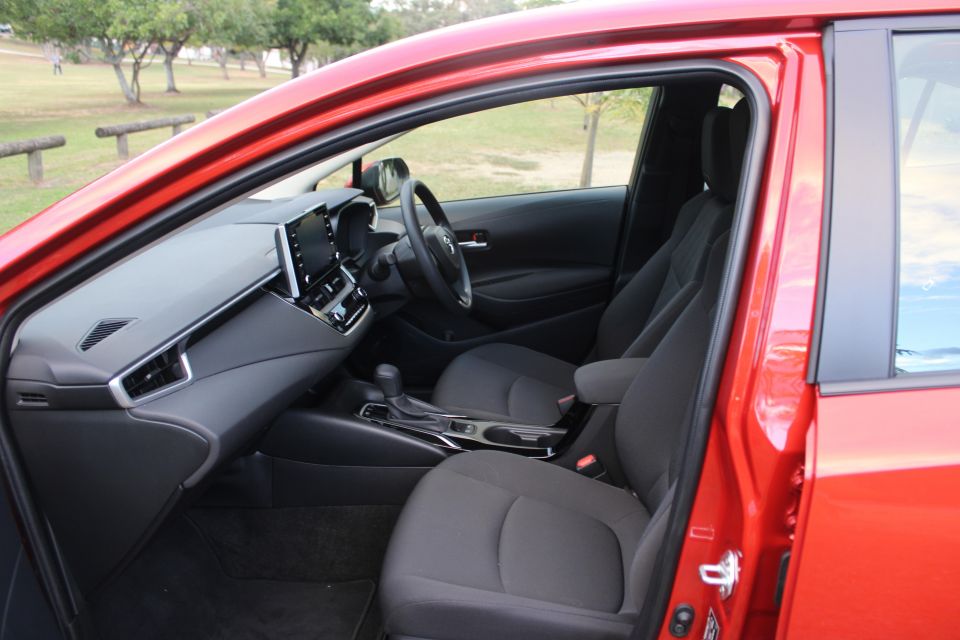
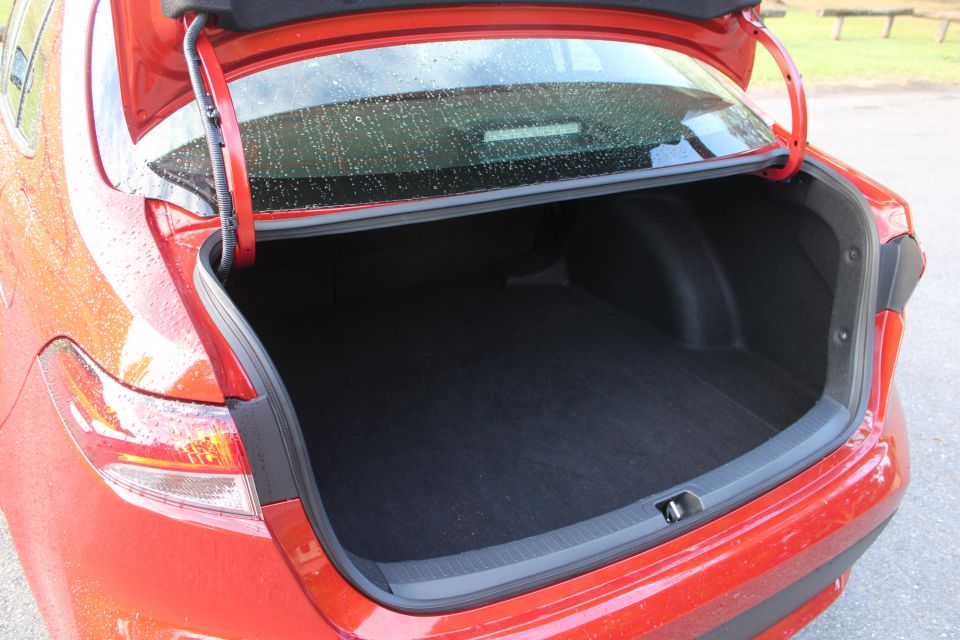
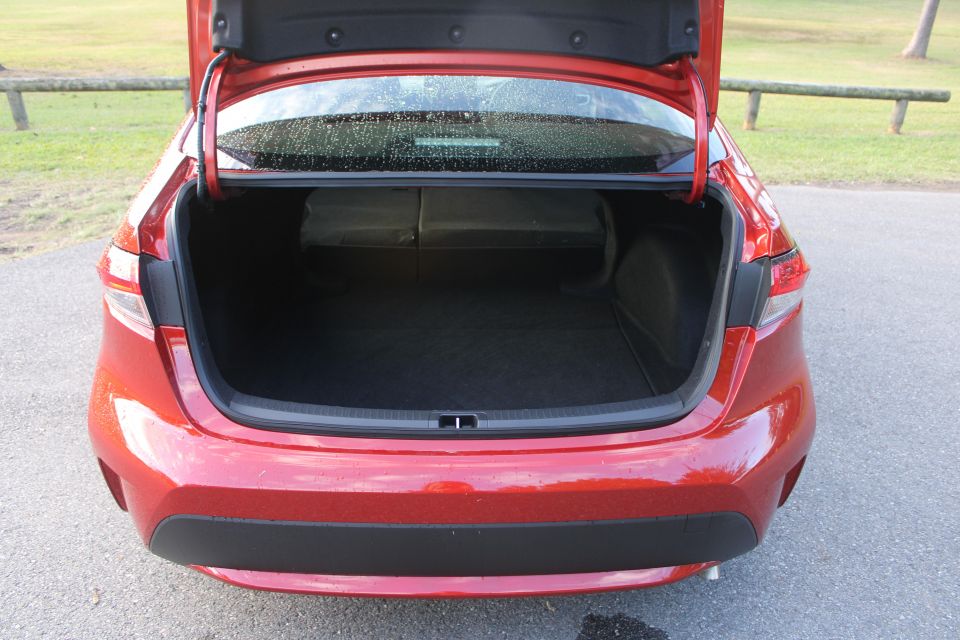
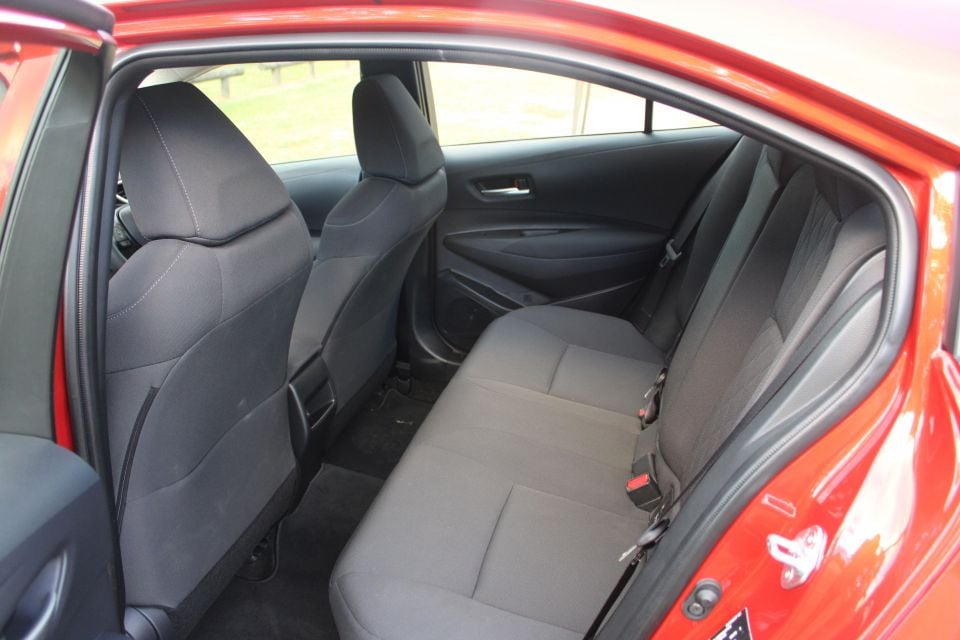
The cloth seats are comfortable both front and rear, with the front buckets sufficiently supportive over long distances. The diamond patterning also adds some visual interest.
Open the boot and you’ll find 470L of cargo volume, which can be increased by folding the rear seats. Again, the Kia Cerato comes out ahead with its 502L volume but the Corolla is ahead of the Mazda3 sedan (444L) and Hyundai Elantra (458L).
It’s also much more cavernous than the hatchback, which has between 217L and 333L depending on the variant. Underneath the boot floor you’ll find a space-saver spare; only the petrol Ascent Sport has a full-size spare.
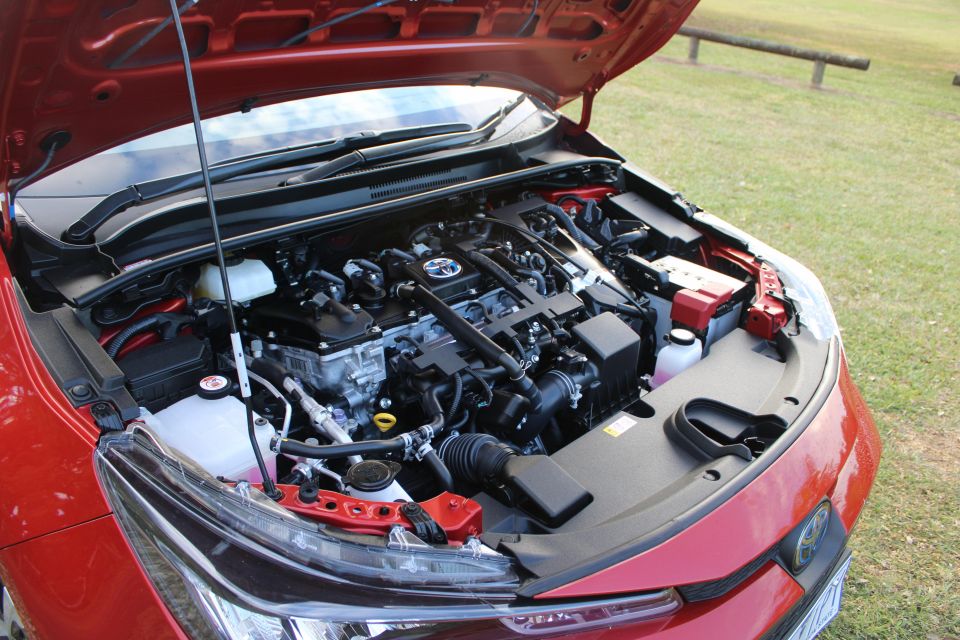
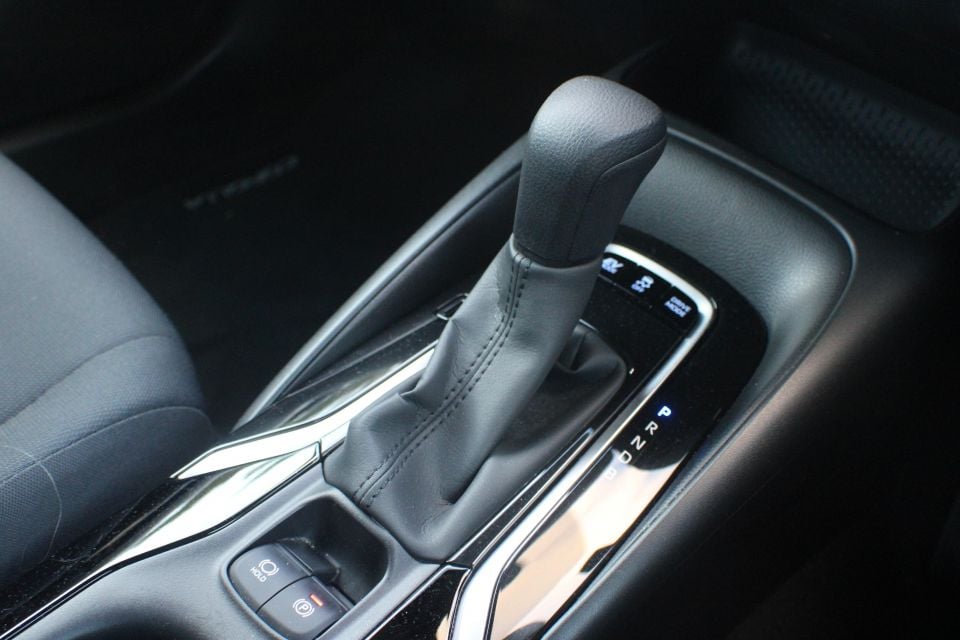
The Toyota Corolla Hybrid is powered by a 1.8-litre Atkinson cycle four-cylinder petrol engine producing 72kW of power and 142Nm of torque, mated to a nickel-metal hydride battery and two electric motors. The main drive motor produces 53kW of power and 163Nm of torque.
Combined system output is 90kW but Toyota doesn’t provide a combined torque figure.
Power is delivered to the front wheels via an electronic continuously variable transmission (e-CVT).
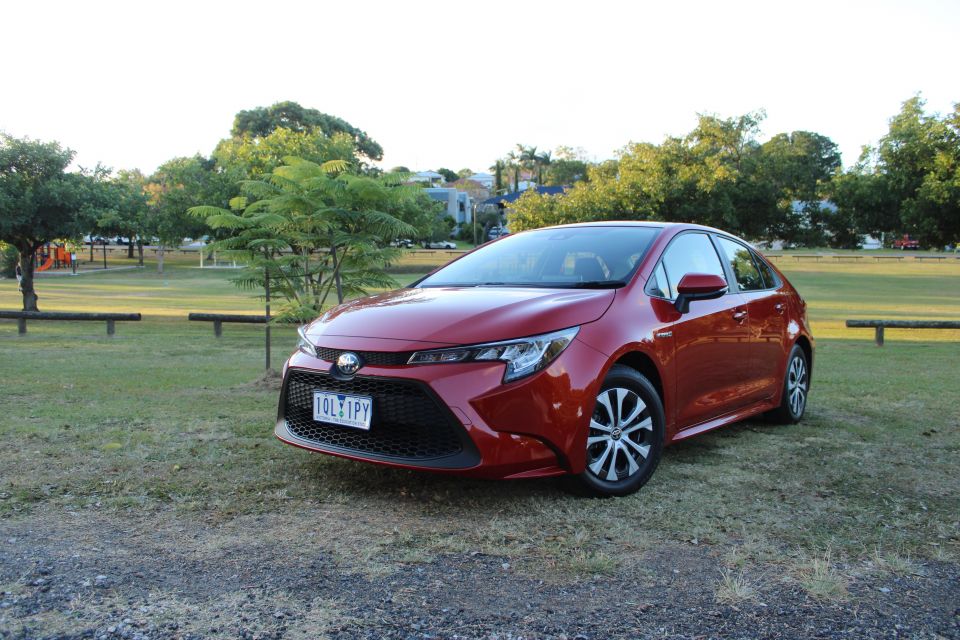
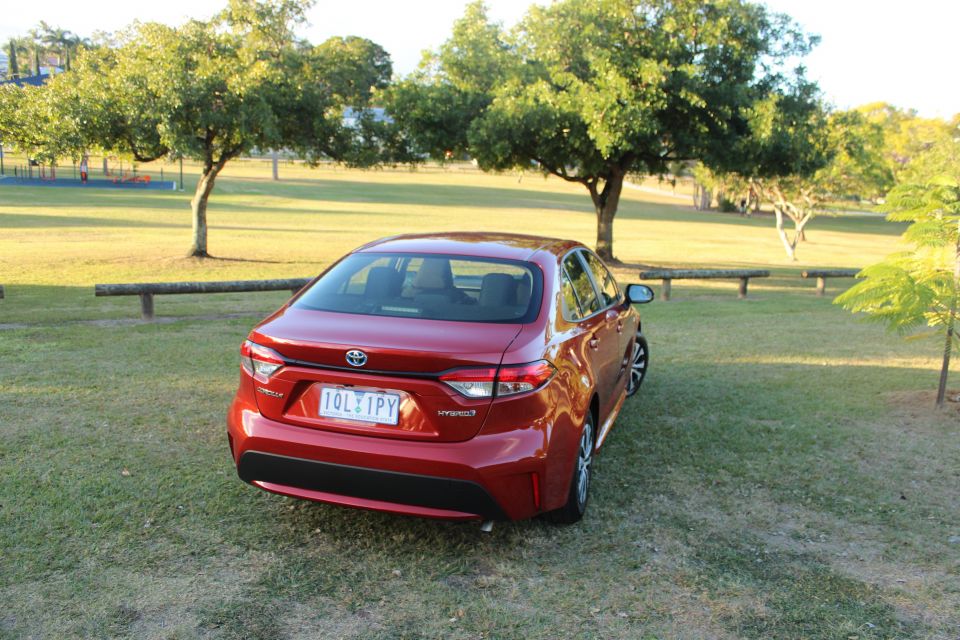
While the urethane wheel is unpleasant to touch, it controls a steering system that’s light and precise.
As hybrids do, the Corolla glides along silently until the engine kicks in. The transition is smooth – Toyota’s been making hybrids for over twenty years, so the company’s Hybrid Synergy Drive is a well-oiled machine by now.
Likewise, the Toyota Corolla’s e-CVT is hard to fault. A CVT isn’t exactly the enthusiast’s choice, but the Corolla’s unit does a commendable job keeping power flowing smoothly and helps the car feel sprightly.
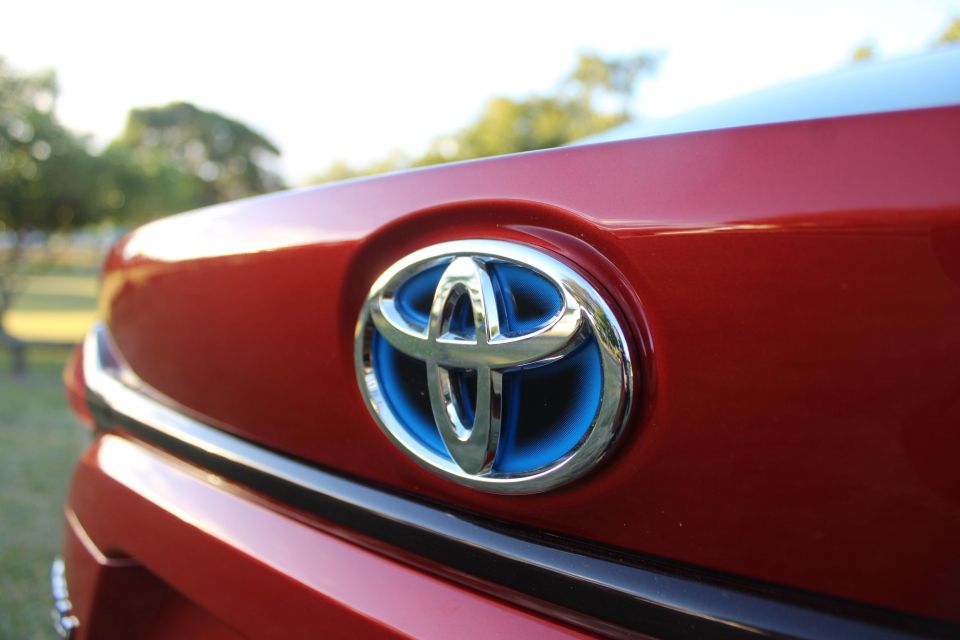
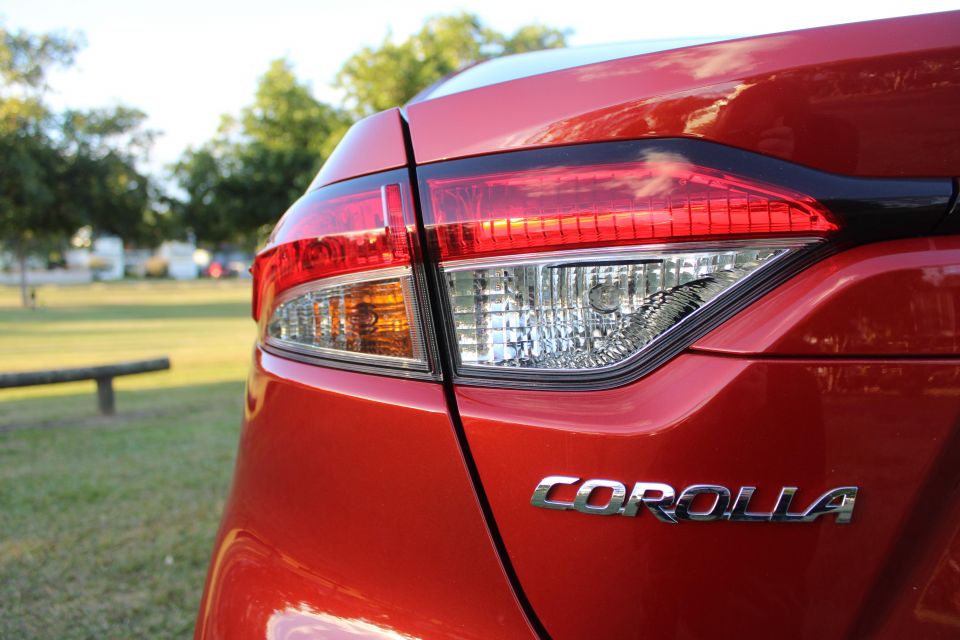
Despite its relatively low outputs, the Corolla never feels lacking for power. It weighs just 1385kg, around 15kg less than the Ascent Sport hatch and only 10kg more than the regular Ascent Sport sedan.
The new TNGA architecture underpinning the Corolla has endowed it with handling that’s well-balanced. It’s also fairly unique in its segment in offering four-wheel independent suspension; many rivals, like the Cerato and Mazda3, use a torsion beam rear axle.
The Corolla’s refinement is let down only by persistent wind noise around the mirrors at highway speeds. The tyres also generate some roar at high speeds.
Over the occasional sharp rut, the Corolla can clomp, though fortunately, its ride is otherwise hard to fault. Unlike the hatchback range, the two hybrid sedans feature positively dainty 15-inch wheels.
The Corolla features both lane-departure warning with steering assist and lane-tracing assist, the latter working in conjunction with the adaptive cruise control. The lane-departure warning works well but, unfortunately, the steering assist and lane-tracing assist need work.
The Corolla’s fuel economy is excellent. Toyota claims 3.5L/100km on the ADR combined cycle for the hybrid Ascent Sport and SX sedans, lower even than the claimed 4.2L/100km for their hatchback counterparts. In a recent SX Hybrid hatchback tested, we achieved 5.1L/100km over a mix of city and highway driving.
By comparison, the non-hybrid Ascent Sport automatic sedan achieves a claimed 6.0L/100km on the combined cycle.
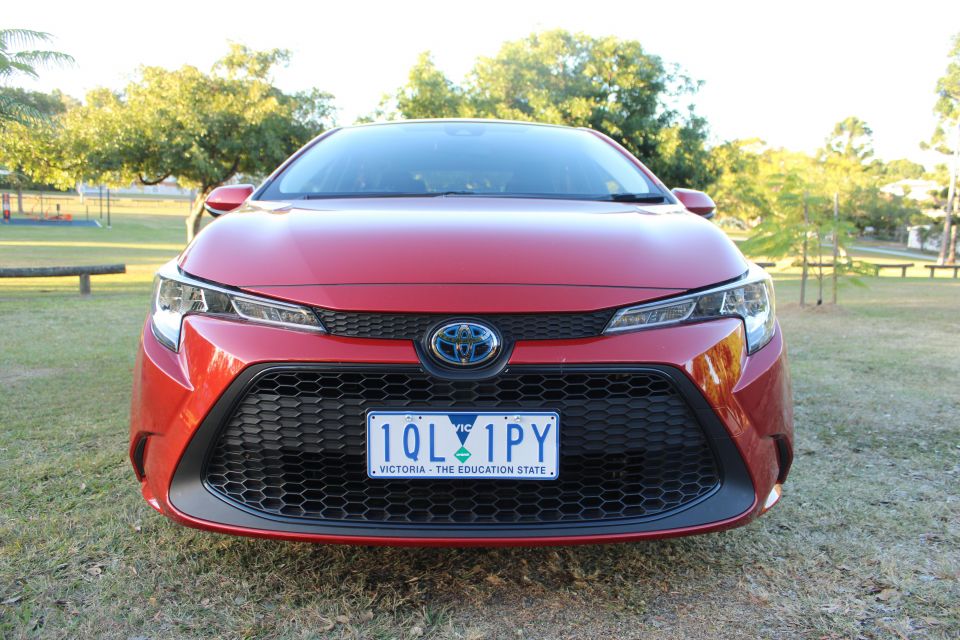
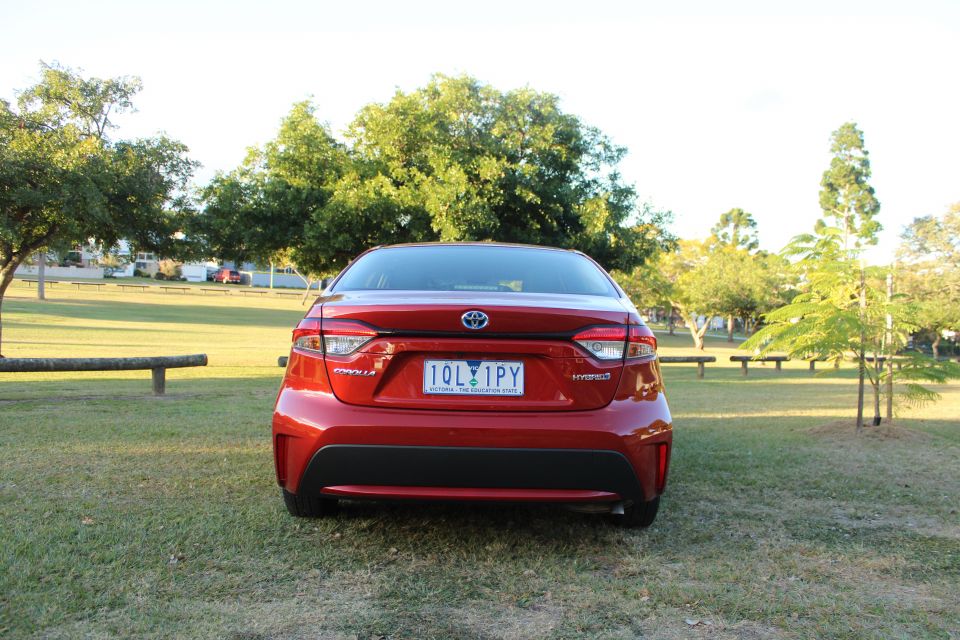
The claimed 3.5L/100km seems entirely possible with the right driving style. There’s a selectable Eco mode which dulls throttle response to aid fuel economy, while the Corolla also boasts an EV mode button. The latter is a waste of time as virtually any application of throttle deactivates it, while the car operates in electric-only mode at low speeds by default anyway.
You can either move the shifter to Drive or to B. The latter applies moderate engine braking when going down hills, though we didn’t notice much of a difference in operation between the two modes.
In addition to its five-year, unlimited-kilometre warranty, Toyota offers five years of capped-price servicing.
The Corolla requires servicing every 12 months or 15,000km, whichever comes first, and each service costs just $180 each. That’s cheaper than the Mazda3 and Kia Cerato.

Where expert car reviews meet expert car buying – CarExpert gives you trusted advice, personalised service and real savings on your next new car.
There’s scarcely anything more practical and sensible than a Toyota Corolla Hybrid sedan. From its superb fuel economy and low running costs to its spacious boot, it’s the ideal city runabout for many buyers.
The sedan is a little frumpy but it addresses key criticisms of the hatchback, chiefly the five-door’s small boot and cramped back seat.
In Ascent Sport trim, it’s lacking in comfort and convenience features. However, its value for money remains high because buying a Corolla Hybrid is the only way to get a new hybrid under $30,000.
Rivals like the Mazda3 might be more attractive and better-equipped but the Corolla Ascent Sport Hybrid sedan is a relentlessly sensible yet satisfying option for small car buyers.
Where expert car reviews meet expert car buying – CarExpert gives you trusted advice, personalised service and real savings on your next new car.
Discover and compare similar models
William Stopford is an automotive journalist with a passion for mainstream cars, automotive history and overseas auto markets.


Max Davies
2 Days Ago
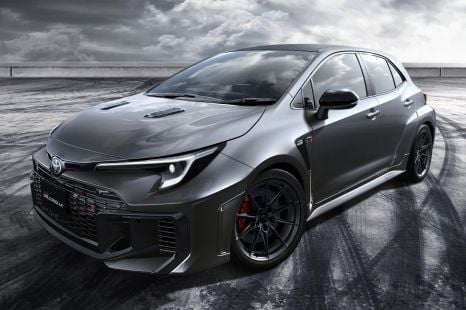

Derek Fung
4 Days Ago
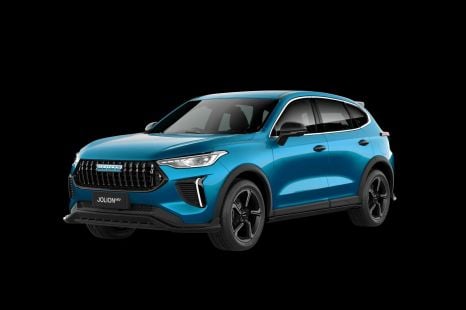

William Stopford
7 Days Ago
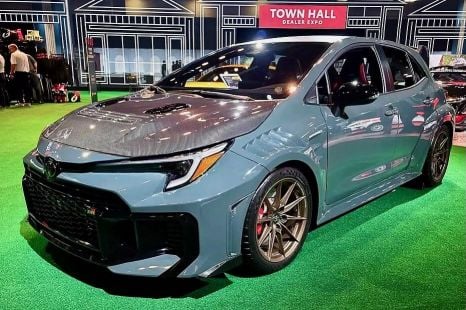

Ben Zachariah
7 Days Ago
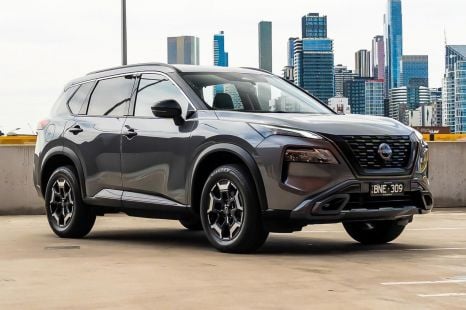

William Stopford
8 Days Ago


Derek Fung
11 Days Ago